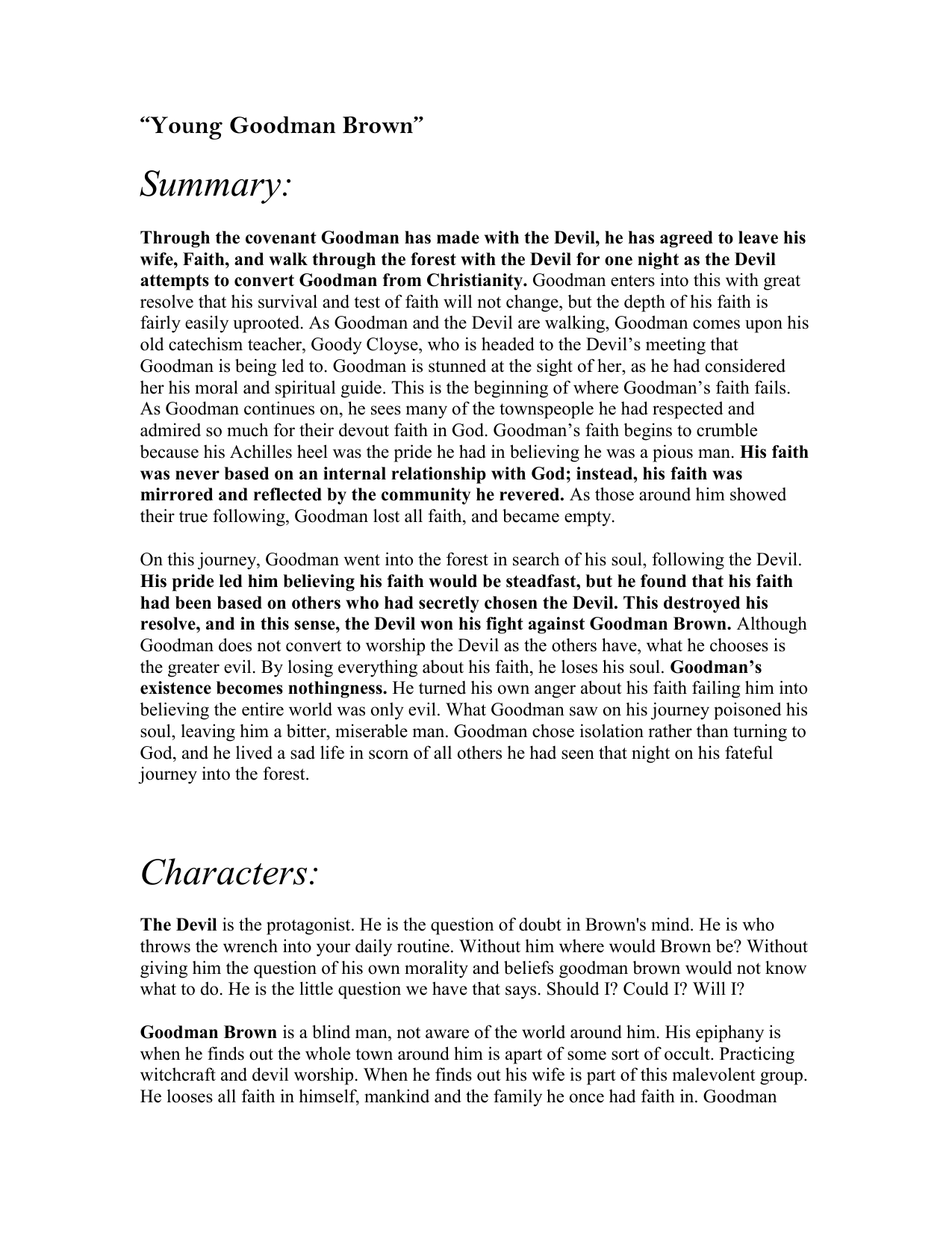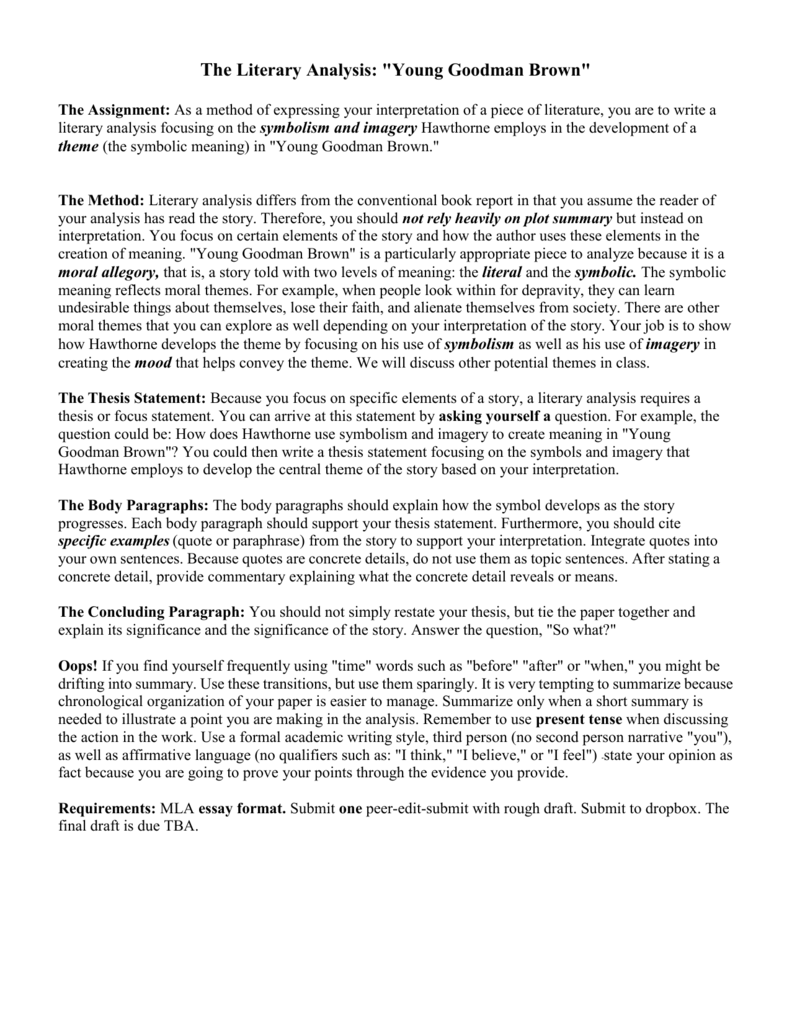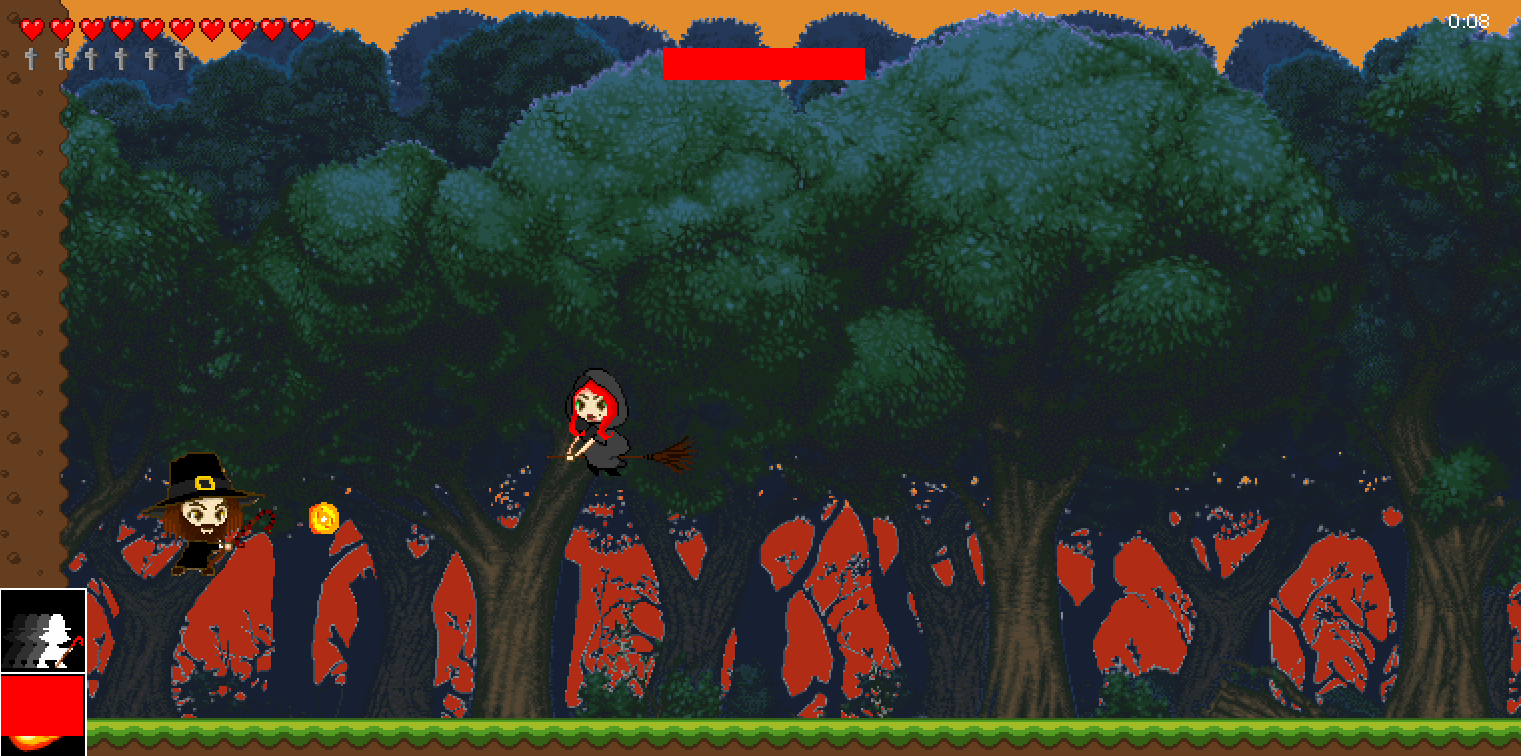


While the story condemns those who view themselves as more righteous than others, the teacher got away with using it because the language is archaic, and the message nuanced. The biggest evil, Hawthorne claims, is the evil we create ourselves. The trials are not part of the stories, but they lurk just behind the trees in both Young Goodman Brown and Hawthorne’s more famous novel The Scarlet Letter.

Even though the witch trials were more than 100 years before Nathaniel Hawthorne was born, it is as if the author tried to bleed out a multi-generation trauma through his pen. He died refusing to admit that condemning innocent people to die was a bad thing to do. His ancestor John Hathorne (Nathaniel Hawthorne added the W to the name) was a judge during those bloody days. Nathaniel Hawthorne himself was obsessed with the Salem Witch Trials of the late 1600s. Like many young men, religious or not, he has been socialized to battle the righteous battle, even when there is nothing there to fight. Young Goodman Brown is upstanding, publicly pious, and somewhat innocent for someone knee-deep in 1690s New England. He goes into the woods in search of good and evil. It is a tale about a Puritan who leaves his beautiful young wife for the night. Nevertheless, she taught Nathaniel Hawthorne’s short story “ Young Goodman Brown” for many years. This teacher worked at a religious school where even Shakespeare was censored. An English teacher I know could not show the musical Man of La Mancha because it had a prostitute in it.


 0 kommentar(er)
0 kommentar(er)
